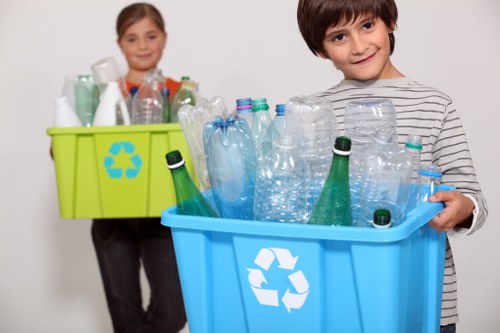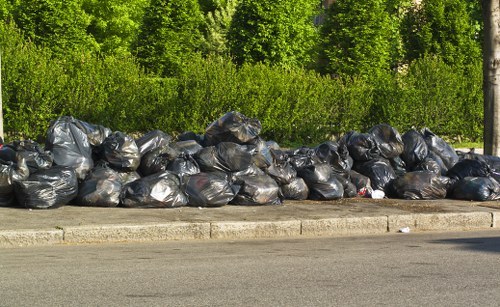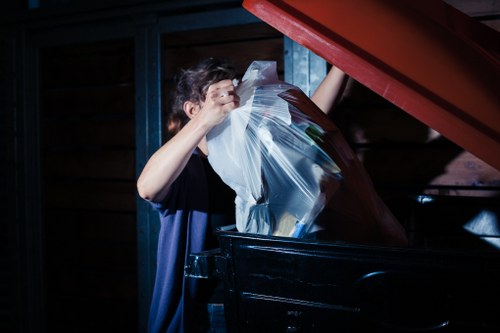Waste Clearance Custom House: Efficient Solutions for a Cleaner Future

Waste clearance at Custom House is an essential service that ensures the smooth operation of both residential and commercial areas. Managing waste effectively not only promotes a cleaner environment but also enhances the overall quality of life for the community.
Custom House, being a bustling hub, generates a significant amount of waste daily. Proper waste clearance helps in maintaining hygiene, preventing pollution, and adhering to local regulations. This article delves into the importance of waste clearance at Custom House, the processes involved, and the benefits it brings to the surrounding areas.
Understanding the types of waste generated is crucial for effective clearance. From household waste to industrial by-products, each type requires specific handling and disposal methods. This ensures that waste management is both efficient and environmentally friendly.

The Importance of Waste Clearance
Waste clearance plays a pivotal role in urban management. It helps in:
- Preventing Health Hazards: Accumulated waste can become a breeding ground for harmful bacteria and pests.
- Reducing Environmental Impact: Proper disposal minimizes the release of pollutants into the air, water, and soil.
- Enhancing Aesthetics: Clean surroundings contribute to a more pleasant and inviting environment.
- Compliance with Regulations: Adhering to waste management laws helps avoid legal issues and fines.
By addressing these aspects, waste clearance services at Custom House contribute significantly to the well-being of the community.
Moreover, efficient waste management supports sustainability initiatives, ensuring that waste is handled responsibly for future generations.

Waste Clearance Processes
Collection
The first step in waste clearance is the collection of waste materials. This involves:
- Segregating waste into categories such as recyclable, non-recyclable, and hazardous.
- Using specialized containers for different types of waste to streamline the process.
- Scheduling regular pickups to prevent accumulation.
Effective collection ensures that waste is managed systematically, reducing the risk of environmental contamination.
Transportation
Once collected, waste is transported to designated facilities. This phase includes:
- Using appropriate vehicles for different waste types.
- Ensuring safe and secure transport to prevent spillage and contamination.
- Optimizing routes to enhance efficiency and reduce carbon footprint.
Proper transportation is essential for maintaining the integrity of waste management operations.
Disposal and Recycling
The final stage involves the disposal or recycling of waste. This includes:
- Disposing of non-recyclable waste in landfills or incinerators.
- Processing recyclable materials to reduce the need for virgin resources.
- Treating hazardous waste to neutralize its harmful effects.
Recycling not only conserves natural resources but also reduces the overall environmental impact of waste.

Benefits of Efficient Waste Clearance
Implementing an effective waste clearance system at Custom House offers numerous advantages:
- Improved Public Health: Reducing waste accumulation minimizes health risks associated with poor sanitation.
- Environmental Protection: Proper waste management helps in conserving natural resources and protecting ecosystems.
- Economic Gains: Recycling and resource recovery can generate revenue and create job opportunities.
- Enhanced Community Well-being: A clean environment fosters a sense of pride and responsibility among residents.
These benefits collectively contribute to a sustainable and thriving community.
Furthermore, efficient waste clearance can boost local economies by attracting businesses and investors who value environmental responsibility.

Challenges in Waste Clearance
Despite its importance, waste clearance at Custom House faces several challenges:
- Volume of Waste: Managing large quantities of waste requires robust infrastructure and resources.
- Recycling Limitations: Not all materials are easily recyclable, posing challenges for waste reduction.
- Funding Constraints: Adequate funding is essential for maintaining and upgrading waste management systems.
- Public Participation: Effective waste management relies on the cooperation of the community.
Addressing these challenges requires a collaborative approach involving government bodies, businesses, and residents.
Innovative solutions and continuous improvements in waste management practices are key to overcoming these obstacles.
Technology in Waste Clearance
Advancements in technology have revolutionized waste clearance at Custom House. Modern solutions include:
- Automated Collection Systems: Enhancing efficiency and reducing labor costs.
- Smart Bins: Equipped with sensors to monitor waste levels and optimize collection routes.
- Waste-to-Energy Plants: Converting waste into usable energy, reducing landfill dependency.
- Recycling Technologies: Improving the processing and reuse of recyclable materials.
These technologies not only streamline waste management operations but also promote environmental sustainability.
Integrating technology into waste clearance processes leads to better resource management and reduced environmental impact.
Local Relevance: Nearby Areas
Custom House serves a diverse community, and its waste clearance system extends to several nearby areas, each with unique needs:
- Stratford: Located just north of Custom House, Stratford benefits from expanded recycling programs and efficient waste collection services.
- Marylebone: To the west, Marylebone relies on Custom House's specialized handling of hazardous waste.
- Canary Wharf: East of Custom House, Canary Wharf utilizes advanced waste-to-energy solutions provided by Custom House services.
- Islington: South of Custom House, Islington engages in community-driven waste reduction initiatives supported by Custom House.
- East Ham: Adjacent to Custom House, East Ham benefits from scheduled waste pickups and public awareness campaigns.
- Leyton: Northeast of Custom House, Leyton employs smart bin technologies to enhance waste management efficiency.
- Wapping: Southwest, Wapping leverages Custom House's expertise in recycling and resource recovery.
- Ilford: Northwest of Custom House, Ilford relies on robust landfill management supported by Custom House waste clearance.
- Barking: Further east, Barking utilizes waste clearance services for both residential and commercial sectors.
- Chingford: Southeast, Chingford engages in sustainable waste practices facilitated by Custom House initiatives.
- Wanstead: Located directly south, Wanstead benefits from integrated waste management solutions.
- Plumstead: On the southeast perimeter, Plumstead adopts eco-friendly waste disposal methods promoted by Custom House.
- Walthamstow: To the northeast, Walthamstow enhances its recycling rates through Custom House programs.
- Shepherd’s Bush: West of Custom House, Shepherd’s Bush supports waste clearance through community partnerships.
- Bow: Continuing east, Bow maintains clean streets with regular waste collection from Custom House services.
Each of these areas benefits uniquely from the comprehensive waste clearance services provided by Custom House, ensuring a cleaner and healthier environment for all residents.
Conclusion
Waste clearance at Custom House is more than just collecting trash; it's about fostering a sustainable and healthy environment for the community. By implementing efficient waste management practices, leveraging technology, and addressing local needs, Custom House plays a crucial role in environmental stewardship.
Residents and businesses alike must collaborate to maintain cleanliness and support waste clearance initiatives. Together, we can ensure a cleaner, greener future for Custom House and its surrounding areas.
Frequently Asked Questions
1. What types of waste are collected by Custom House?
Custom House collects various types of waste, including household waste, recyclables, hazardous materials, and industrial by-products. Each category is handled with specific procedures to ensure safe and efficient disposal.
2. How can residents participate in effective waste clearance?
Residents can participate by segregating their waste, using designated bins for different waste types, minimizing waste generation, and following the scheduled collection times. Public cooperation is essential for successful waste management.
3. What technologies are used in Custom House's waste clearance?
Custom House utilizes automated collection systems, smart bins with sensors, waste-to-energy plants, and advanced recycling technologies to enhance the efficiency and effectiveness of waste clearance operations.
4. How does Custom House handle hazardous waste?
Hazardous waste is handled with special care, using designated containers and transportation methods to ensure safe disposal. Custom House adheres to strict regulations to prevent environmental contamination.
5. What are the benefits of recycling through Custom House?
Recycling through Custom House conserves natural resources, reduces landfill use, lowers pollution levels, and can generate economic benefits by creating jobs and supporting sustainability initiatives.